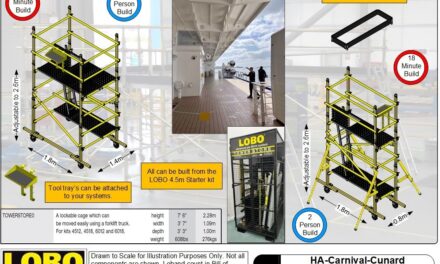In this article, Larry Wilson, founder and author of SafeStart international, explains how workers can be taught to quickly recognise active states like rushing and frustration so that they do not make critical errors.
When you ask a safety professional, almost any safety professional in any country for that matter, if compliance with legal standards and laws is enough to prevent all serious injuries and fatalities, they say no. This is especially true for anyone who has been in the profession for more than 10 years. The reason they say no is not because we don’t have enough laws and standards, it is because you can’t, in any kind of practical terms, have a rule or procedure for everything, and even if you did, you can’t in any kind of practical terms enforce it all.
Running an operation injury free takes more than compliance. As mentioned, it is rare to find a safety professional that does not know that it takes a lot more than compliance to get to zero injuries and more work than that to get to zero harm. This could be because they have investigated too many serious incidents where there was no culprit hazard or system deficiency – like someone falling on a perfectly good stairway.
So, when you’ve investigated enough of these kinds of incidents, you know there’s still something missing. About 20 years ago, behaviour-based safety started to become popular. The idea was that we could all get each other to make better decisions if we all got out and observed each other, gave the person being observed some feedback and then tracked the observations. This worked to reduce injuries, but there were still too many serious injuries and fatalities occurring.
This is understandable. Neuroscience is now showing us that decision making only plays a small part (five per cent) in overall injury causation. In order to prevent injuries like slips and falls, or from when people move without looking first, we will have to retrain their subconscious. Furthermore, just changing some safety-related habits won’t be enough either because there are human factors, or states, like rushing, frustration and fatigue which, when combined with a certain base line of complacency, can override the (new) good habits.
However, there is some positive news here. People can be taught how to quickly recognise the active states like rushing, frustration and fatigue, and they can learn how to self-trigger on these states so they don’t make one or more of the following critical errors: eyes not on task, mind not on task, moving into or being in the line of fire, or somehow losing their balance, traction or grip.
In over 95 per cent of all accidental incidents one or more of these four states: rushing, frustration, fatigue and complacency, or a combination, cause or contribute to a critical error. Since the states come before the errors – in other words, you are in the state for a period of time before you make the error – it means you can use the state as a trigger to think about what you are doing at the moment, and that you need to keep your eyes and your mind on task. What individuals need to look for and think about is line of fire and things that could cause you to lose your balance, traction or grip.
These techniques can be learned but they require training and repetition or, to put it another way, these skills require the people to practice these skills and work on changing some of their safety-related habits. In addition, there are two other critical error reduction techniques they will need to learn and practice. Although the techniques in and of themselves are easy enough to learn, do not cost any money and make perfect sense: move your eyes before you move your hands, feet, body or car (it’s hard to argue with that…). However, as we all know, people don’t change all that easily unless they are motivated. And most people think they are safe enough, especially when it comes to personal safety. This means that they will not have a burning desire to improve. So, what might seem perfectly straightforward: teach them what they need to do, and they’ll all do it, is not likely going to be enough to get anybody to change.
The training will have to be done in a way that is long enough to work (approx. 10 hours) and entertaining enough so that they stay engaged. This is not impossible, even with a fairly “entrenched” workforce. The benefits extend far beyond safety. Human factors and human error affect all areas of business: production, quality, customer service and safety. Which is good, because getting those managers to give you the time and support you need to do the training effectively won’t be as easy if the only benefit is an improvement in safety alone.



